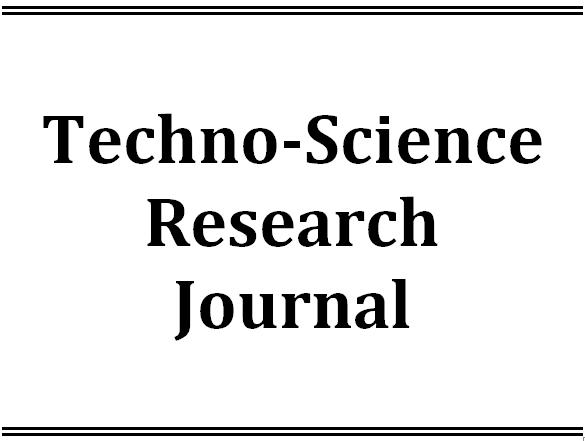Latest Issue
Empowering Education with Online Khmer Handwritten Text Recognition for Teaching and Learning Assistance
Published: August 30,2025Undergraduate Student Dropout Prediction with Class Balancing Techniques
Published: August 30,2025Status of Seawater Quality at Koh Rong Island, Sihanoukville, Cambodia
Published: August 30,2025Low-Complexity Detection of Primary Synchronization Signal for 5G New Radio Terrestrial Cellular System
Published: August 30,2025Word Spotting on Khmer Printed Documents
Published: August 30,2025Tuning Hyperparameters Learning Rate and Gamma in Gym Environment Inverted Pendulum
Published: August 30,2025Examining Passenger Loyalty in Phnom Penh Public Bus System: A Structural Equation Modelling Approach
Published: August 30,2025Prediction on Load model for future load profile of Electric Vehicle charging demand in Phnom Penh
Published: August 30,2025Economic Study on Integrating PV-DG with Grid-Tie: Case Study in Cambodia
Published: August 30,2025Low-Cost Adsorbent in Treatment of Acid Mine Drainage in Cambodia: Chong Phlah, Mondulkiri
-
1. Faculty of Geo-resources and Geotechnical Engineering, Institute of Technology of Cambodia, Russian Federation Blvd., P.O. Box 86, Phnom Penh, Cambodia
Received: April 15,2022 / Revised: / Accepted: June 25,2022 / Available online: June 30,2023
Acidminedrainage(AMD)isamajorenvironmentaldistributedpollutantduetotheexposureofairandwaterfrom tailing and overburden produced from metals mining activity. AMD might degrade water to strong acidity, sulfide, iron (Fe), and other heavy metals contents due to the chemical consumption during the mineral extraction process. Thus, this study aimed to investigate the effectiveness of neutralization acid mine drainage caused by artisanal and small-scale mining at Chong Phlah, Mondulkiri, Cambodia. In this study, eggshell, limestone, and Calcium Carbonate (CaCO3) were applied as the adsorbent. The adsorbent was grounded to the size of less than 75μm, however, the eggshell was calcined at 900 oC for 2 hours before grinding. Limestone source was obtained from Battambong province, Cambodia. The experiment was conducted to study the influence of adsorbent dosage, varied time, adsorption kinetic, removal behavior, and stability of sample after treatment. Batch adsorption results showed that the maximum removal of As, Fe, and Mn was greater than 98%, 95%, and 83%, with eggshell, limestone, and CaCO3, respectively. The optimum contact time of As, Fe, and Mn removal was 480, 180, and 5 min, respectively. The pH between 5.8 and 6.6 was obtained after the adsorption process. In addition, As, Fe, and Mn following the pseudo-second-order kinetic model. The stability of arsenic and iron was arsenate and hematite, respectively. This demonstrated that the neutralization of acid mine drainage by the eggshell, limestone, and CaCO3 could be obtained. The application of this neutralization method using eggshell and limestone was considered cost-effective, readily available, and environmentally friendly to remove the heavy metals from acid mine drainage caused by tailing waste from artisanal and small-scale mining. The commercial CaCO3 in neutralization showed great effectiveness over eggshell and limestone, however, it is an expensive material.

